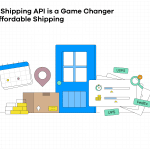
Does this sound familiar? You’re an online seller with a great sense of business. You’ve got a great website. You’ve got great products. Your inventory control is top-notch, and your shipping process is all systems go. You’re on Amazon, Walmart, eBay, Shopify, and all the other top platforms. You’ve checked your traffic numbers, and they’re through the roof. You’ve done everything right to ensure your online sales will take off.
So, why are your sales so flat—and getting flatter by the day? For online sellers, getting customers to click on that vaunted ‘Buy Now’ button often boils down to two words: scarcity and urgency. Without creating scarcity and urgency, visitors to your product page will simply go elsewhere.
After all, if nothing is pushing them to buy now, why shouldn’t they tell themselves they can always return later? Creating enough scarcity and urgency to drive sales requires much more than simply adding a button or call-to-action to your product offering.
Instead, these concepts are directly related to customer psychology. The more online sellers can tap into their customers’ thinking and reactions, the easier it will be to create the urgency and scarcity that motivates people to buy. Let’s take a look at how this all works.
What Is Urgency, and How Do I Create It?
Ever heard of the term FOMO? FOMO stands for Fear Of Missing Out, which is the key to creating urgency. You want your buyers to feel compelled to act quickly so they don’t miss out on a great deal.
One of the easiest ways to create urgency is to impose a time restriction on your product or sale. No one wants to miss out on an opportunity that might go away, and offers that are set to expire do just that. In fact, split tests show that simply adding a countdown timer to a page can increase conversion rates by almost 10%.
Another way to create a sense of urgency is to run recurring ‘flash sales,’ which offer extremely short-time discounts on carefully selected products. Flash sales should clearly state the exact date and time the sale ends.
A similar strategy can be used for shipping. Creating deadlines for express or free shipping can convince customers to complete their purchases sooner.
The right color can also trigger an unconscious sense of urgency. Psychologists have found that certain colors have a direct impact on people’s actions. Red, orange, and yellow are linked with heat and fire, and calls can all induce people to act. One A-B test found that switching a call-to-action button from green to red increased the conversion rate by 21%.
Publicity is another way to create urgency and scarcity. Before releasing a product, sellers can generate excitement around the new offering. Countdowns to launch can trigger pleasurable emotions in your customers and encourage them to buy as soon as the product is released.
Scarcity: Working with Supply and Demand
Some ecommerce merchants worry that having a limited inventory of some products can hurt sales. This is not always the case. In fact, scarcity is one-half of the classic formula behind every economic trend: supply and demand.
Whenever a product is in low supply, demand increases. Sellers should use this principle to their advantage. Telling customers there is a limited number of items creates a fear of missing out, which can lead to a sale.
Similarly, keeping a running quantity count on the buying page also sends a subtle but strong message to customers: Buy now before it’s too late.
Good copywriting can also create scarcity. Instead of using phrases like ‘on sale now,’ sellers can rewrite the phrase to state, ‘almost gone’ or ‘they’re going quick!’ This message can be reinforced in emails or other communications with potential customers.
One company included an email postscript, which read, ‘Our last product launch resulted in our fastest sellout ever. Get them quick.’ This created an ongoing reminder of scarcity around other products offered by the company.
Novelty is another concept that creates both urgency and scarcity. It’s not for nothing that the phrase ‘new and improved’ has stood the test of time. Apple regularly does this by creating a new version of the iPhone every year or so.
To be sure, not every online seller offers the kind of items sold by Apple. But this strategy can be used even for products that don’t lend themselves to new versions very often. Simply repackaging, rebranding, or including add-ons to old products can create something new that your customers will want.
Warning: Don’t Over Do It
While creating urgency and scarcity can help drive sales, remember that no one likes a pushy salesman. Customers are smart. They will quickly catch on if your site is seen as inauthentic or too pressuring.
When employed properly, urgency and scarcity encourage procrastinators to make a decision, not to force people to buy things they don’t want. At the same time, online sellers that use urgency and scarcity properly will see strong returns on their efforts.
Book a Descartes Sellercloud demo today.




